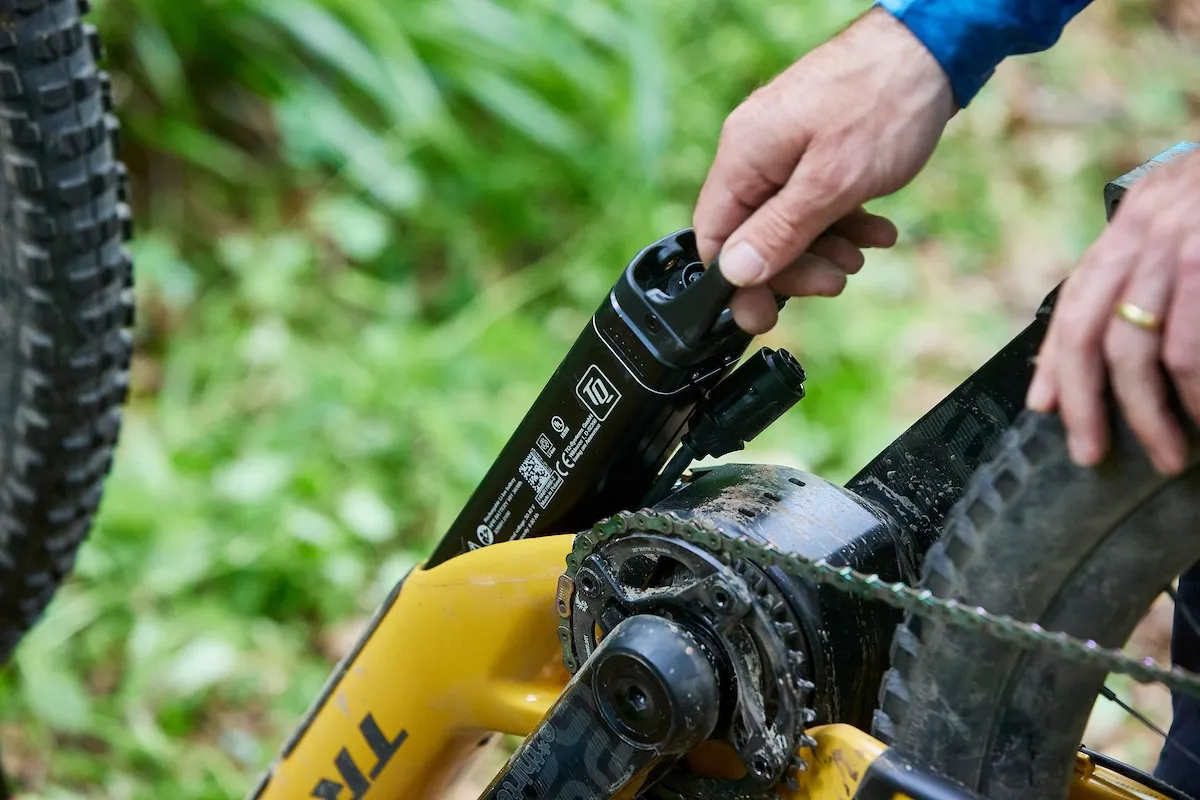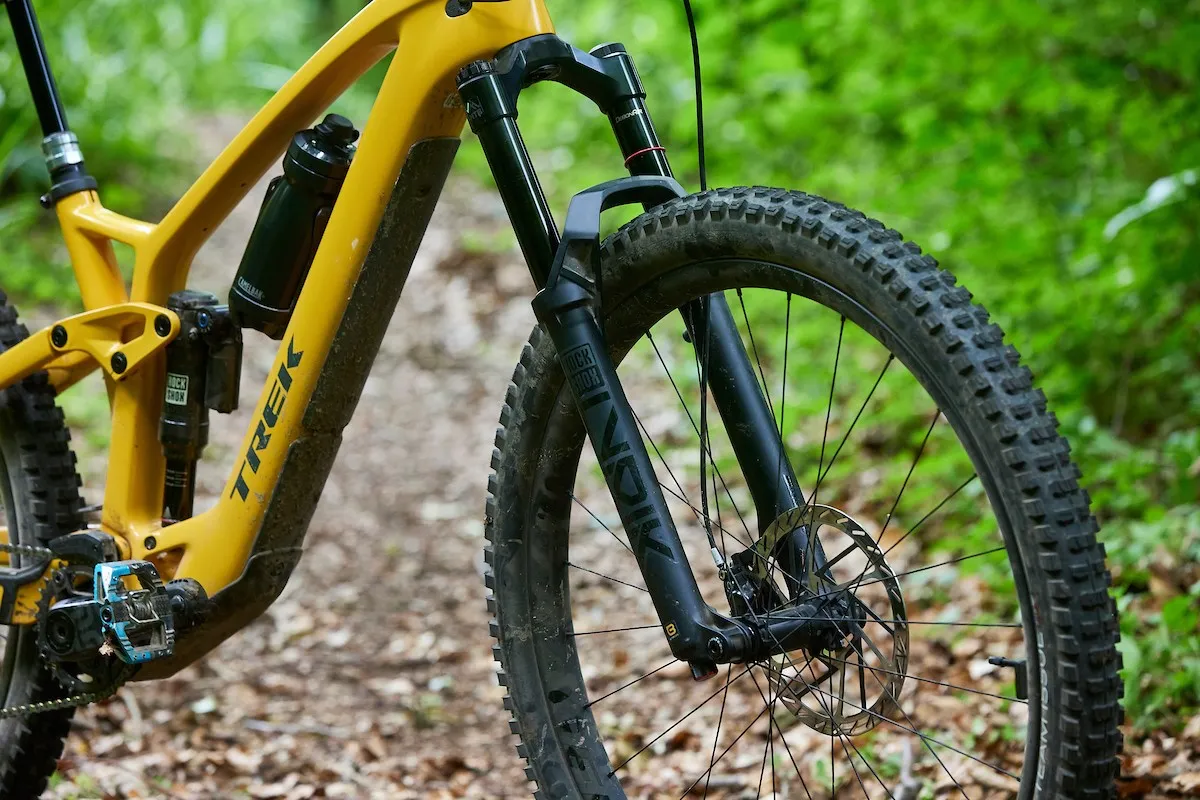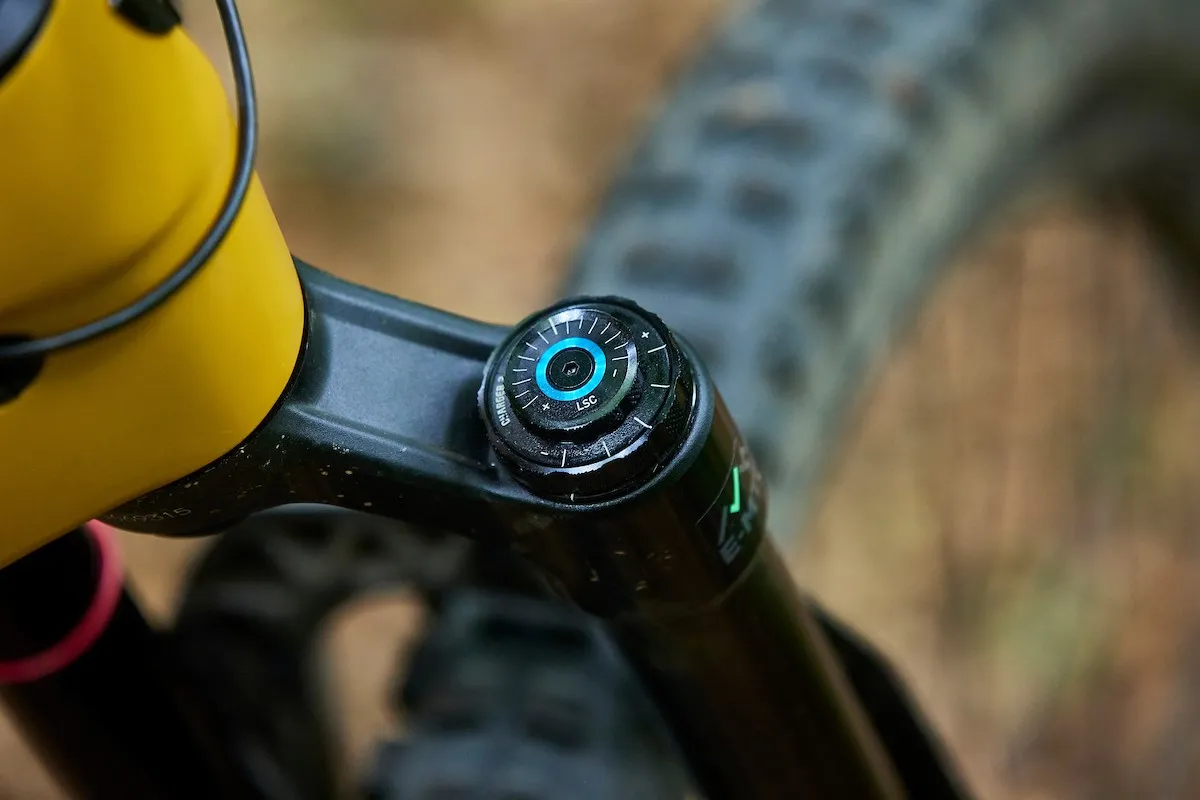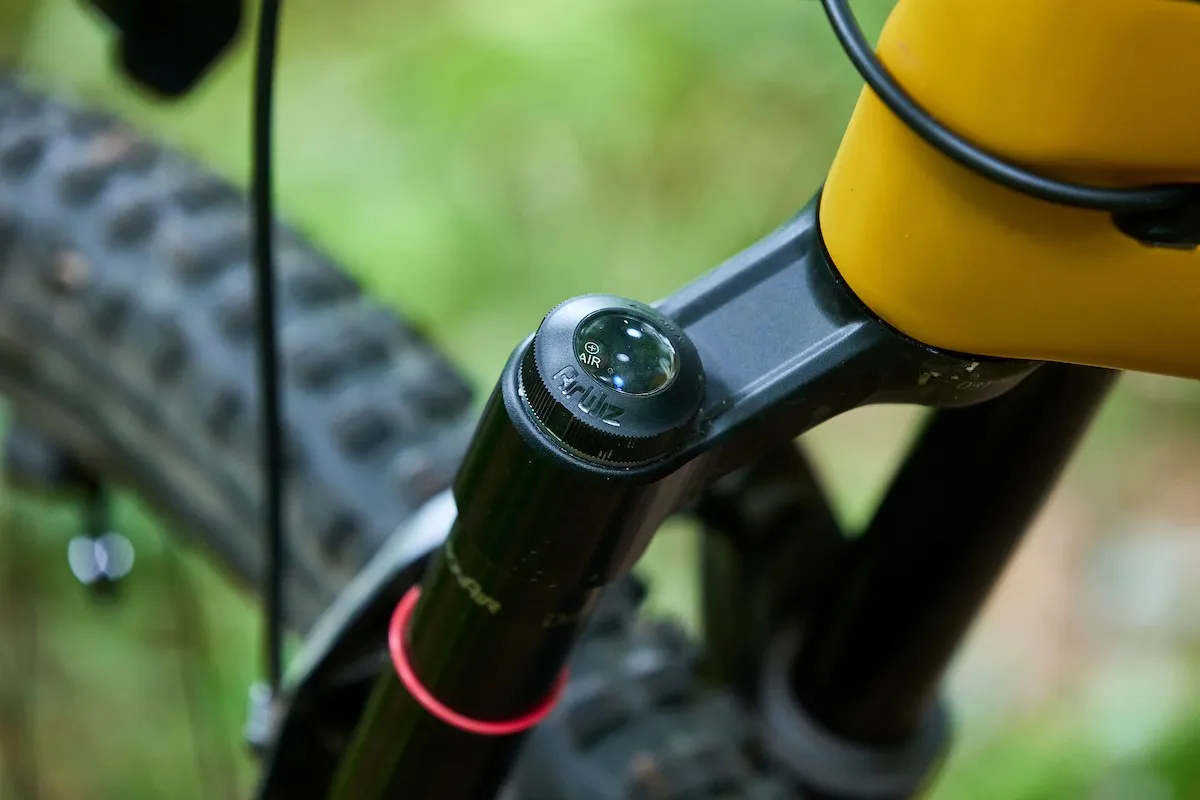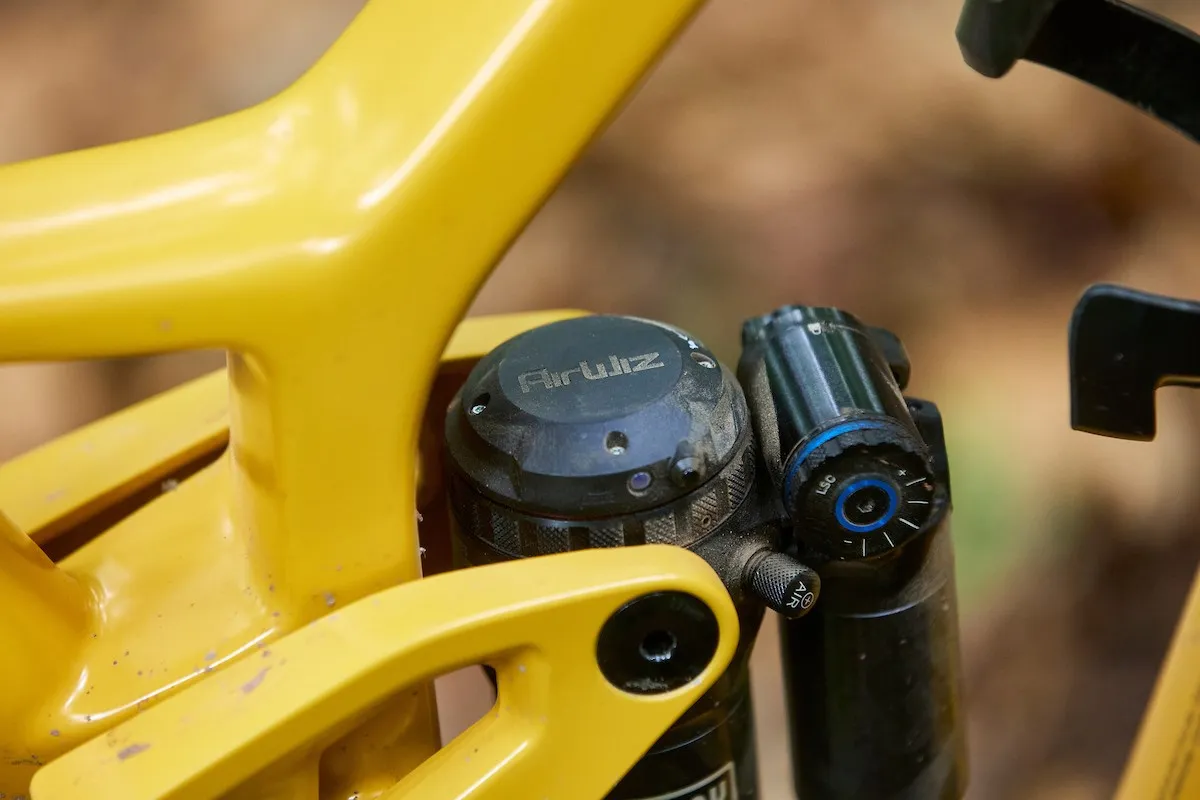The all-new EXe electric mountain bike from Trek is a ‘mid-level assist’ trail bike that’s designed to deliver the natural ride feel of a regular mountain bike, but offers riders some assistance on the way back up the hills.
At its heart is the new TQ HPR50 motor, which produces 50Nm of torque (Specialized’s Turbo Levo SL delivers 35Nm). It’s seriously compact, said to be almost totally silent and could well be the key that helps the Fuel EXe stand above others in this category.
Trek has taken a big gamble in using an unproven motor. So, will it pay off on the trails?
Five things you need to know about the Trek Fuel EXe
- The Fuel EXe uses the new HPR50 motor from TQ that produces 50Nm of torque
- There’s a removable 360Wh battery and 160Wh range extender available
- Everything including battery level, ride data, mapping and motor tuning can be performed using the new Trek Central app
- Rear-wheel travel is 140mm, paired with a 150mm-travel fork
- The Fuel EXe might be a trail bike but the slack 64.7-degree head angle and generous 452mm reach (medium) give you an idea about just how capable it might be
Lighter-weight electric bikes aren’t anything new (you only need to look to the likes of the Lapierre eZesty, Orbea Rise or Specialized Turbo Levo SL to see that it’s a trend set to stay) but as with any ebike, there’s always an element of compromise, whether it be a lack of power, range or geometry.
Could Trek’s new Fuel EXe eMTB change all of that? And what does ‘mid-level assist’ even mean?
Trek Fuel EXe motor and battery details
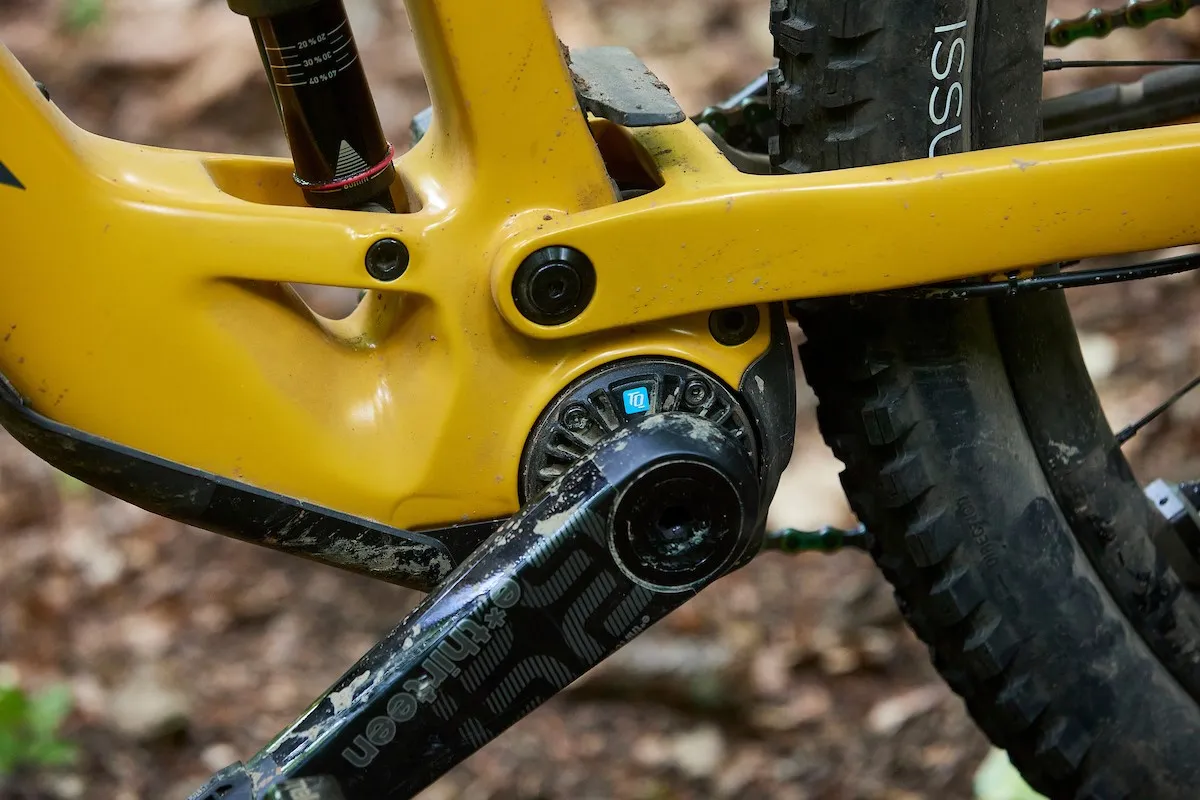
While we’d normally get stuck straight into the frame details, this time around we need to start by talking through the motor that sits neatly inside the Fuel EXe.
The bike is, after all, built around the new TQ HPR50 drive unit and it could be argued that this technology has enabled Trek to create a bike that could redefine what’s possible with lightweight eMTBs in the future.
The drive unit in question is compact, light at around 1,850g (claimed to be the lightest motor in this category) and barely visible (you’ll need to look at the non-driveside of the bike to spot it).
But why, we hear you ask, didn’t Trek opt to use one of the bigger motor manufacturers for the Fuel EXe project?
It seems it was keen to explore other options and limit compromise. Why build a bike around an existing motor if you can help create a motor that limits geometry compromise?
Understandably, going with a relatively unheard-of brand (within the bike industry, at least) such as TQ is a big risk.
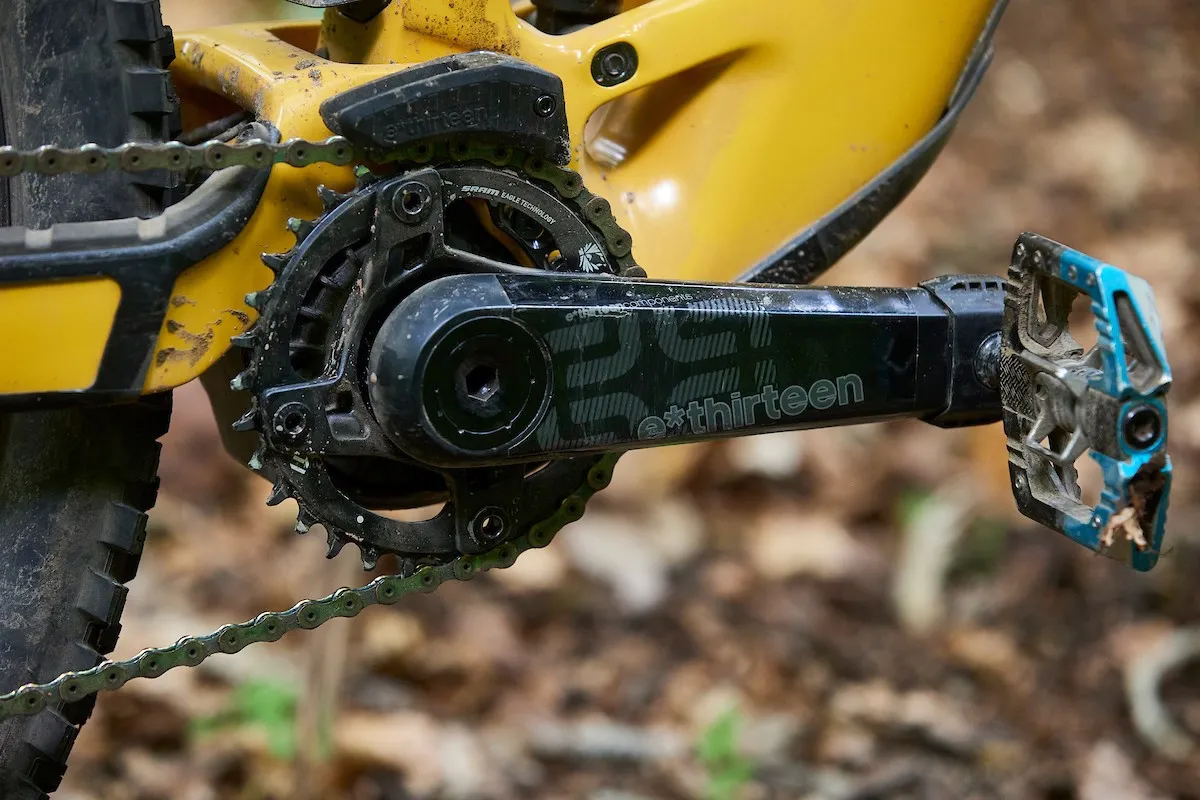
TQ (which stands for Technology in Quality) has been around since 1994 and has been producing drive units for more than 10 years for various applications, including robotics, space travel, medical robots and automation.
Trek met the TQ team at Eurobike in 2018, having spotted a modified Powerfly that housed TQ’s HPR120S drive unit (which delivers a staggering 120Nm of torque).
The ball got rolling and when Trek asked, “How small can an ebike motor with the HPR technology get?” TQ was keen to take on the challenge. As a result, the new HPR50 Drive System was created.
But it wasn’t just the motor and battery that TQ would be providing. As a brand, TQ was keen to provide the full ebike system, including the display, remote, software and apps.
Small, powerful and quiet

The HPR50 Drive Unit uses TQ’s Harmonic Pin Ring technology (hence the ‘HPR’) and is made completely in Germany.
TQ explains the harmonic pin ring gear as: “Two gears – one internal and one external – sit on a central axis and are positively connected to each other by a flexible transmitter called a pin ring. The force is transmitted from one gear to the other via the pins of the transmitter.”
TQ goes on to say that thanks to this design, not only is the HPR system efficient and maintenance-free, but it can also be made to be very compact.
An integrated freewheel and drag-free internal components mean the Fuel EXe is intended pedal like a non-assisted mountain bike when the motor is disengaged.

It still has plenty of kick, too. TQ claims the HPR50 produces 50Nm of torque and 300 watts of peak power.
This is why Trek refers to the Fuel EXe as a ‘mid-level assist’ bike rather than a ‘light’ or ‘low’ assist bike, especially compared to the likes of the Specialized Turbo Levo SL, which generates 35Nm of torque.
In a bid to help create a more natural feel to the overall ride of the Fuel EXe, the HPR500 motor is quiet, too.
Trek claims that using the strong electric motor combined with a low gear ratio, it can run the motor at an RPM three times lower than that of a regular motor, which equates to roughly half the volume (or 0.1 tonality units, just in case you were wondering).
As well as being quiet, TQ claims there’s next to no lag in pick-up, and with a Q-factor of just 135mm, it's designed to give the Fuel EXe a natural feel when riding.
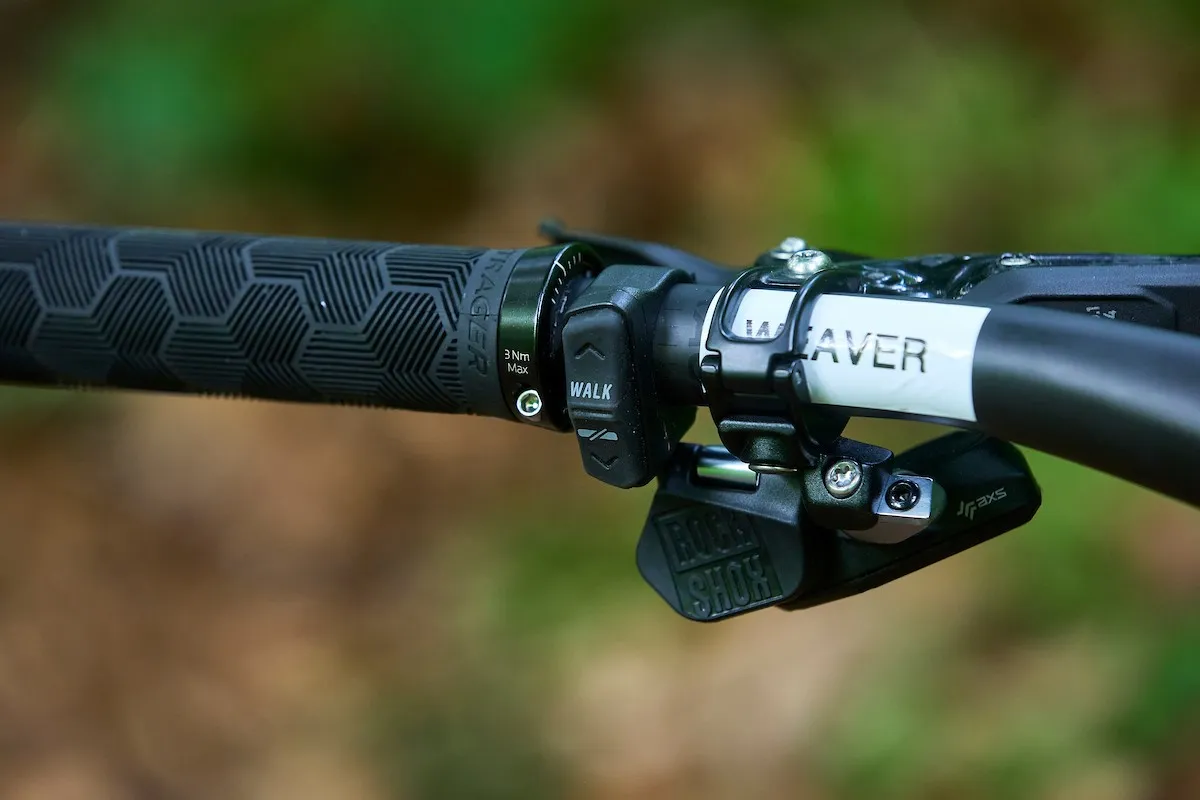
There are only three ride modes to choose from, all of which are customisable through the new Trek Connect app (that includes assistance levels in each mode and pedal response) and can be toggled through using the small bar-mounted remote.
The remote fits neatly between the brake lever and grip. It has only two buttons and includes a walk assist mode.
Trek currently has exclusivity on this motor technology, but only for a short period. TQ will then be able to offer its services to other brands over time.
Getting the miles in
Considering the Fuel EXe aesthetics and how close it looks to a regular, non-assisted mountain bike, you might be surprised to hear that the battery it packs has a 360Wh capacity.
It sits within the relatively slender (for an e-MTB) down tube, which Trek says is 39 per cent smaller than that of its heavy-hitting Rail e-MTB, helping it to look a little less bulky.
TQ says the battery weighs 1,835g and can offer around five hours of ride time in eco mode, or two hours in the highest power setting.
If that’s not enough, Trek offers a 160Wh range extender battery that’ll fit into a regular bottle cage. What’s clever here is that it plugs into the main battery/charging port via a very short cable.
The charging port is located out of harm's way, on the upper side of the down tube, just above the bottle cage.
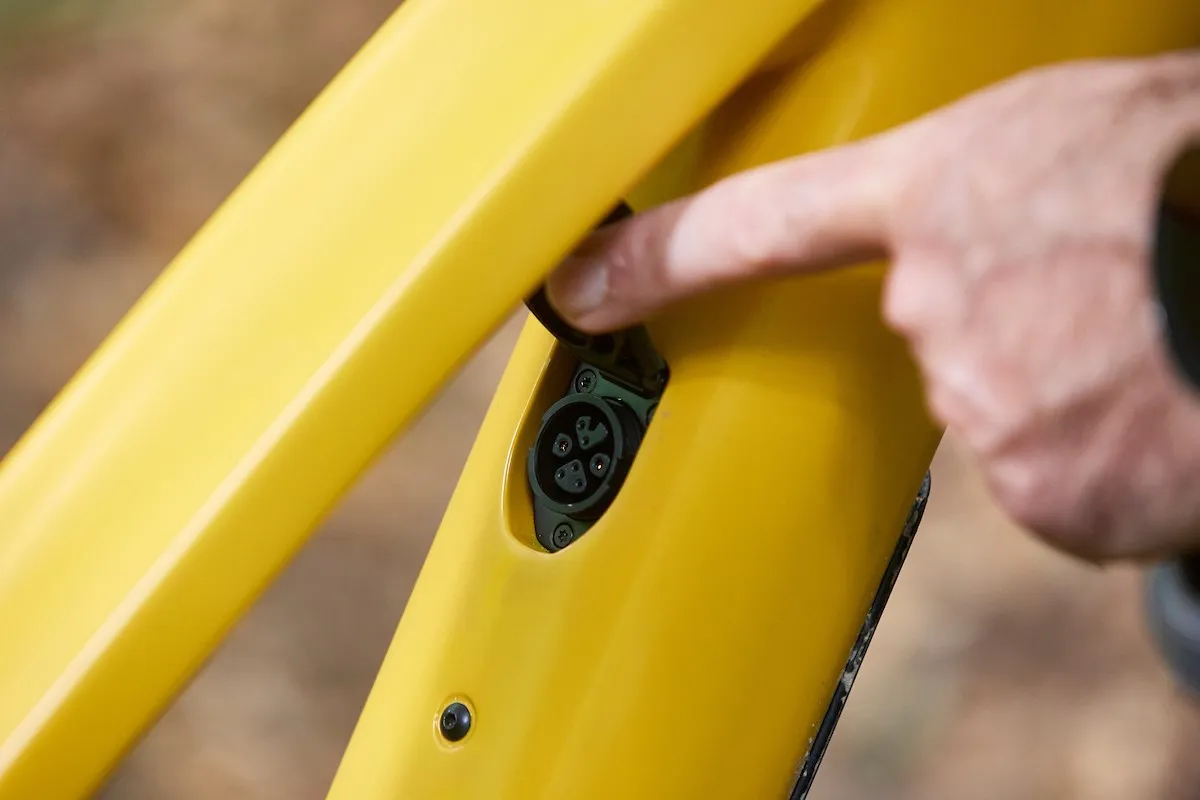
That means there are no lengthy leads looping awkwardly around the frame once the range extender is plugged in, plus it’s less likely than some to get caked in mud.
Charging the main battery is said to take around two hours and, if the range extender is plugged in, it’ll charge the main battery before topping up the range extender. When riding, the Fuel EXe will drain the range extender ahead of the main battery.
If space at home is limited, you can easily remove the battery from the bike to charge it. There are two Allen key bolts holding it in place inside the down tube, with a tough skid plate covering the opening down near the bottom bracket.
A useful, removable handle on the battery makes getting it in and out of the frame that bit easier and protects it should you accidently let it slide out of the frame.
Added extras
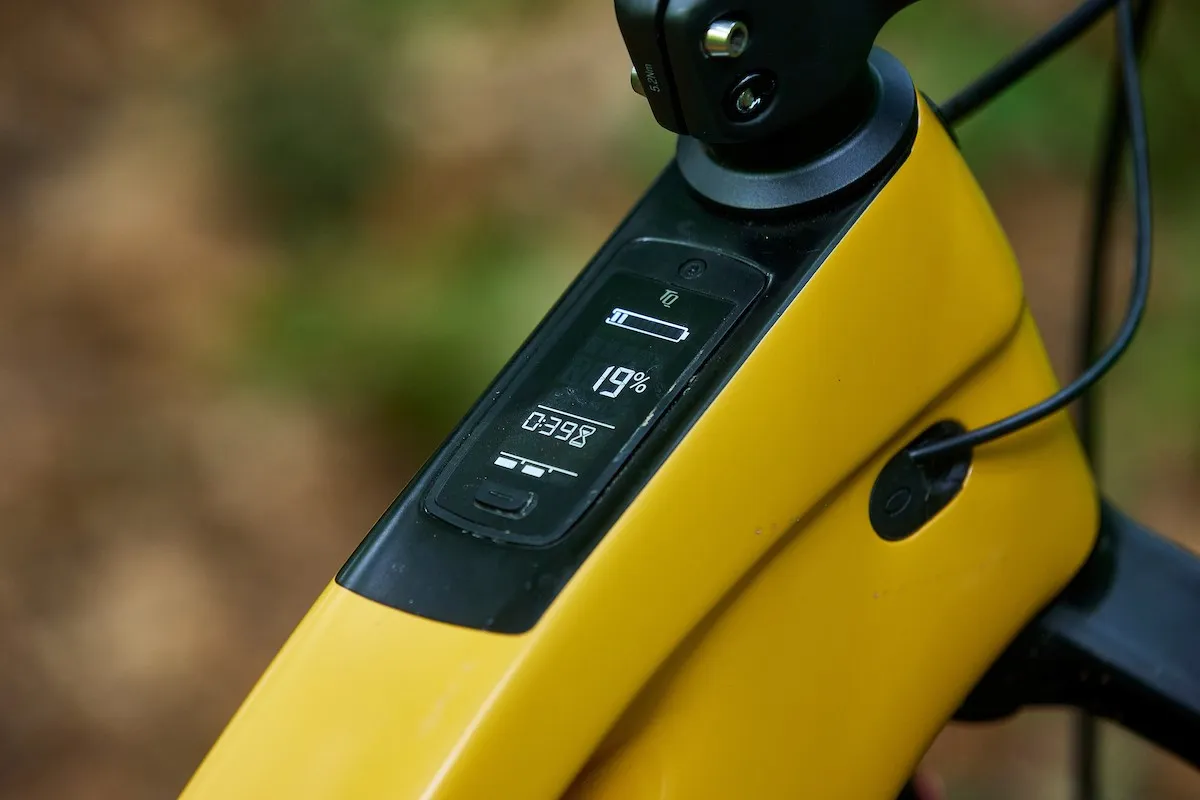
To keep tabs on battery life, speed, estimated range and power, Trek and TQ have included a fully integrated OLED screen into the upper side of the top tube.
It features just one button to turn the system on and off, and also enables you to toggle through the various data options.
As you’d expect, it’ll connect to your phone via Bluetooth as well as most ANT+ GPS units if you’re keen on using one to log your rides.
If you splash out on one of the SRAM AXS-equipped Fuel EXe bikes, it’ll include the TQ Smart Box (which is nestled inside the top tube).

This has output ports for front and rear lights and will let you plug in your AXS rear derailleur, too.
Trek says that even once your main battery is dead, there are still 200 shifts left in the derailleur, which is a plus if you’re still out on the trail.
Although the Smart Box only comes on AXS-equipped bikes, Trek says it will offer it as an aftermarket upgrade, so it’s an easy switch.
Trek Fuel EXe frame and suspension details
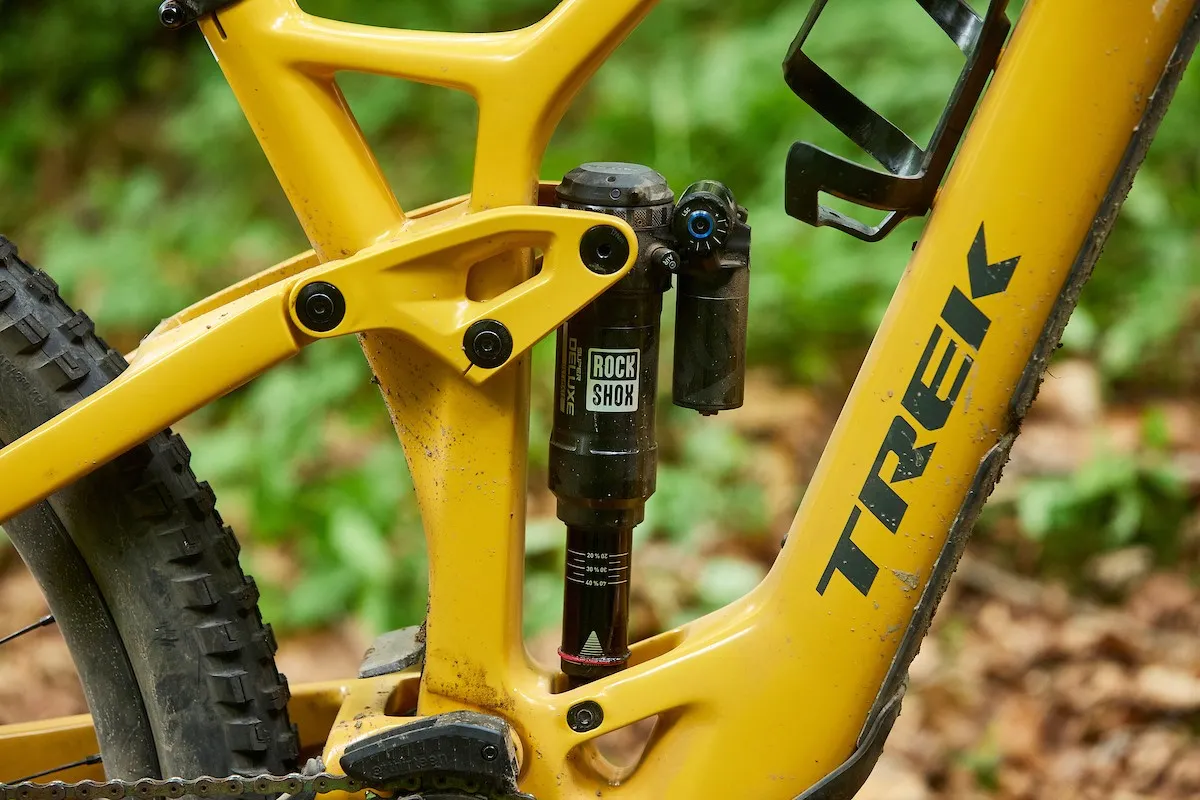
The Fuel EXe is based on Trek’s Fuel EX trail bike, though it is slightly different.
The most obvious change is to the frame shape and overall layout, which is a little different to the current Fuel EX (so we’re guessing we’re likely to see a new Fuel EX in the not too distant future).
The top tube splits where it meets the seat tube and there’s now a cradle just above the bottom bracket, where the bottom of the shock mounts to the frame.
All Fuel EXe bikes are currently offered only with full-carbon frames.
More travel but the same suspension platform
There’s also more travel on tap. The Fuel EXe has 140mm of rear-wheel travel (the current Fuel EX has 130mm of travel) and is designed around a 150mm-travel fork.
The Fuel EXe continues to use Trek’s ABP (Active Braking Pivot) system, which includes a concentric pivot around the rear wheel axle (where the chainstays meet the seatstays), which Trek claims allows it to isolate brake force and suspension function.
Trek says it has moved the main pivot further forward, in a similar fashion to what it did with the latest Top Fuel, to help create more consistent anti-squat values.
Trek has switched to stainless steel hardware at all pivot points, claiming it’ll provide better bolt retention.
No cable-routing woes
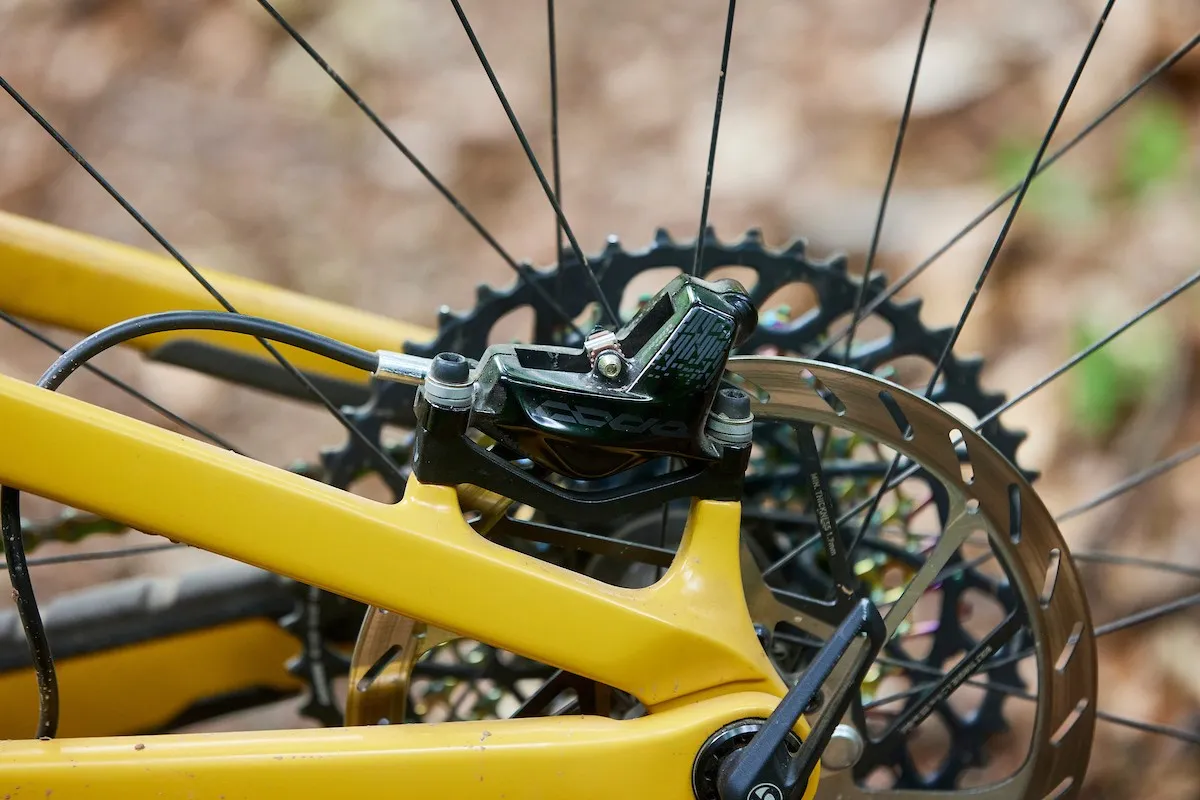
Ever tried changing a gear cable or brake hose on an e-MTB? If you have, chances are you’ve had to remove the battery and possibly even the motor, which is a serious drain on your time.
The Fuel EXe gets tubed internal routing and Trek says you won't need to remove any parts of the drive unit to make a change to your brake hose or gear cable, which is a massive plus when it comes to maintenance.
Tidy touches

Trek was keen to leave no stone unturned with the Fuel EXe project and, as a result, has made sure to tick as many of the detail boxes as possible.
All frames, including the size small, are able to accept a water bottle (though the size small will only take a 600ml/20oz bottle).
There’s a neat little ‘loam shelf’ tucked away just above the bottom-bracket junction at the rear of the seat tube. This is positioned to help prevent too much mud getting flicked down into the gap behind the chainstay brace and front triangle.
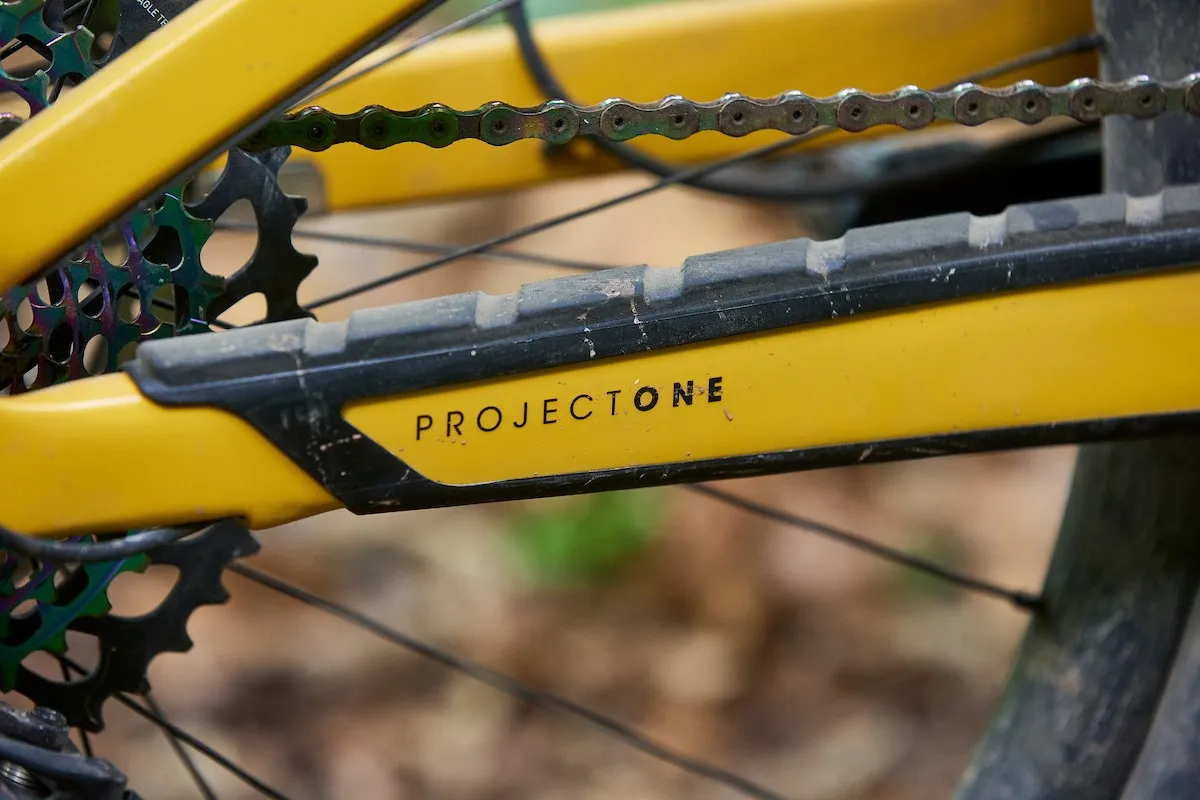
There’s room for a 29x2.5in rear tyre, ample mud clearance and plenty of driveside chain and seatstay integrated protection to help dull down any chainslap.
Unlike a number of Trek's other bikes, the Fuel EXe forgoes a Knock Block – a device placed around the headset to prevent the handlebars from turning past a specific angle, helping to stop the fork crown or gear shifter/dropper remote from fouling on the down and top tubes respectively.
This wasn’t included in order to leave sufficient room for the integrated top tube display.
Geometry

The goal, according to Trek, was to create an eMTB with a very natural feel. Part of that comes down to the geometry.
Thanks to the compact nature of the TQ HPR50 drive unit, Trek says the geometry of the Fuel EXe could be drawn up with zero compromises.
The Fuel EXe comes in small, medium, large and extra-large, with reach figures ranging from 427mm to 507mm.
As you’d expect from Trek, there’s a Mino Link (located at the seatstay/rocker pivot), which can be flipped to sit the bike in either the low or high setting. This alters the head and seat angles by 0.4 to 0.5 degrees (depending on size) and the bottom bracket height by around 7mm.

In the low setting, the Fuel EXe’s head angle is claimed to be a slack 64.7 degrees, while the seat angle should help to sit you comfortably for climbing at 76.7 degrees.
The chainstay measurements across all frame sizes remain the same at 440mm, also in the low setting.
The low setting also provides just over 38mm of bottom-bracket drop, sitting it at 338mm off the floor, which is pretty low.
While all bikes come as standard with 29in wheels at the front and rear, thanks to the Mino Link, you can switch to a 27.5in rear wheel if you wish, but will need to have the bike in the high setting. Trek says this will affect the accuracy of the speed reading slightly, though.
Trek Central app details
At the time of writing, the Trek Central app isn’t yet available, but should be by the time you read this.
This all-new app can do a host of things, including motor tuning, navigation and range monitoring. It has an in-built tyre and suspension pressure calculator, which should help when it comes to setup.
According to Trek, the app is able to calculate your range once you’ve input your weight and will re-calibrate as it learns how you ride to provide more accurate readings.
For those with deep pockets, the Fuel EXe 9.9 will come equipped with SRAM’s TyreWiz (to monitor tyre pressure) and AirWiz (to monitor spring pressure in your fork and shock).
The Central app will sync with these units and be able to provide a ‘Ready to Ride’ status, turning red if you need to add pressure to a tyre, fork or shock and green if they’re within the recommended pressure window.
Trek Fuel EXe closest competition

Lightweight e-MTBs are nothing new and the new Fuel EXe is up against some serious competition.
Specialized’s Turbo Levo SL is arguably the most obvious bike to compare this too, though the Fuel EXe trumps it when it comes to torque and battery capacity. The Fuel EXe has more up-to-date geometry too.
The Orbea Rise could potentially be the Fuel EXe’s closest rival thanks to similar torque figures and battery capacities. The geometry isn’t a million miles off, either. However, Orbea uses a full-size Shimano EP8 motor in the Rise, unlike the compact TQ unit found here.
Trek Fuel EXe range overview and pricing
Trek offers six different build options for the Fuel EXe, with Project One options on certain models (9.7, 9.8 XT and 9.9 XX1 AXS).
Trek Fuel EXe 9.5
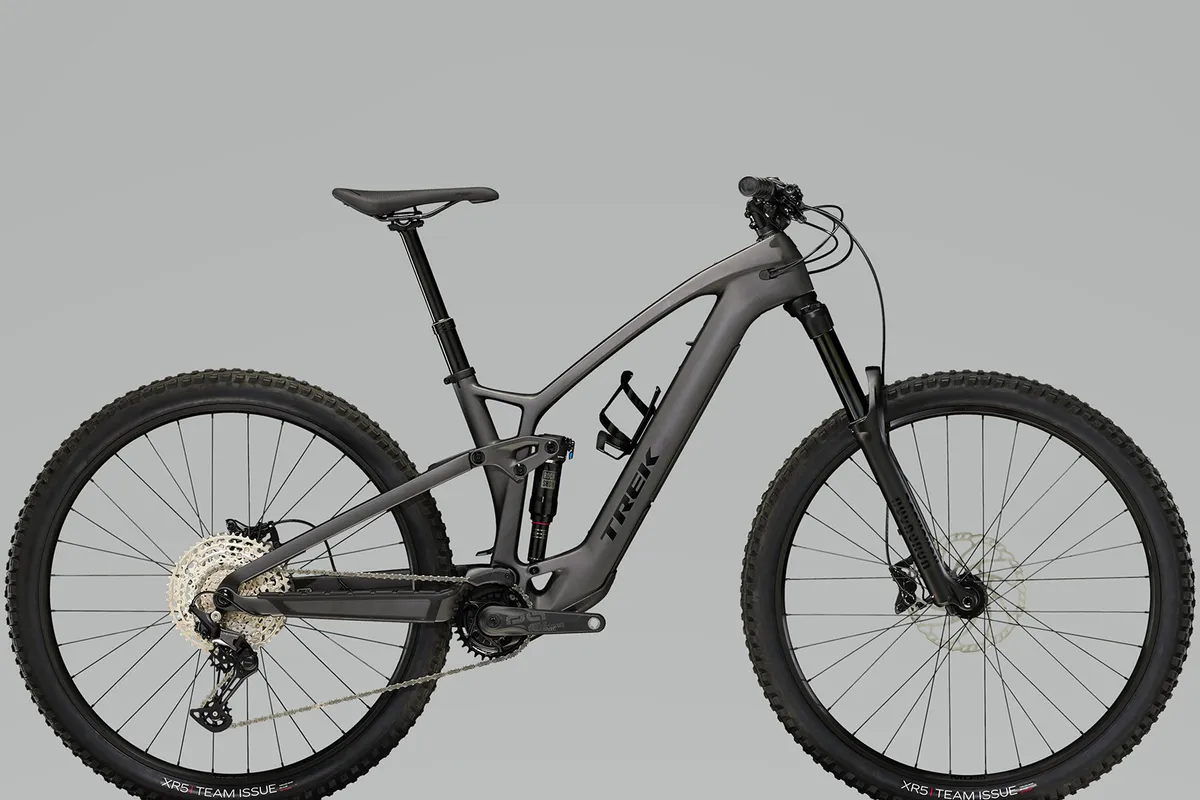
- Price: £5,750/$6,499.99
- Fork: RockShox 35 Gold RL, 150mm travel
- Shock: RockShox Deluxe Select+
- Tyres: Bontrager XR5 29x2.5in
- Drivetrain: Shimano Deore
- Brakes: Shimano four-piston
- Extras: N/A
Trek Fuel EXe 9.7
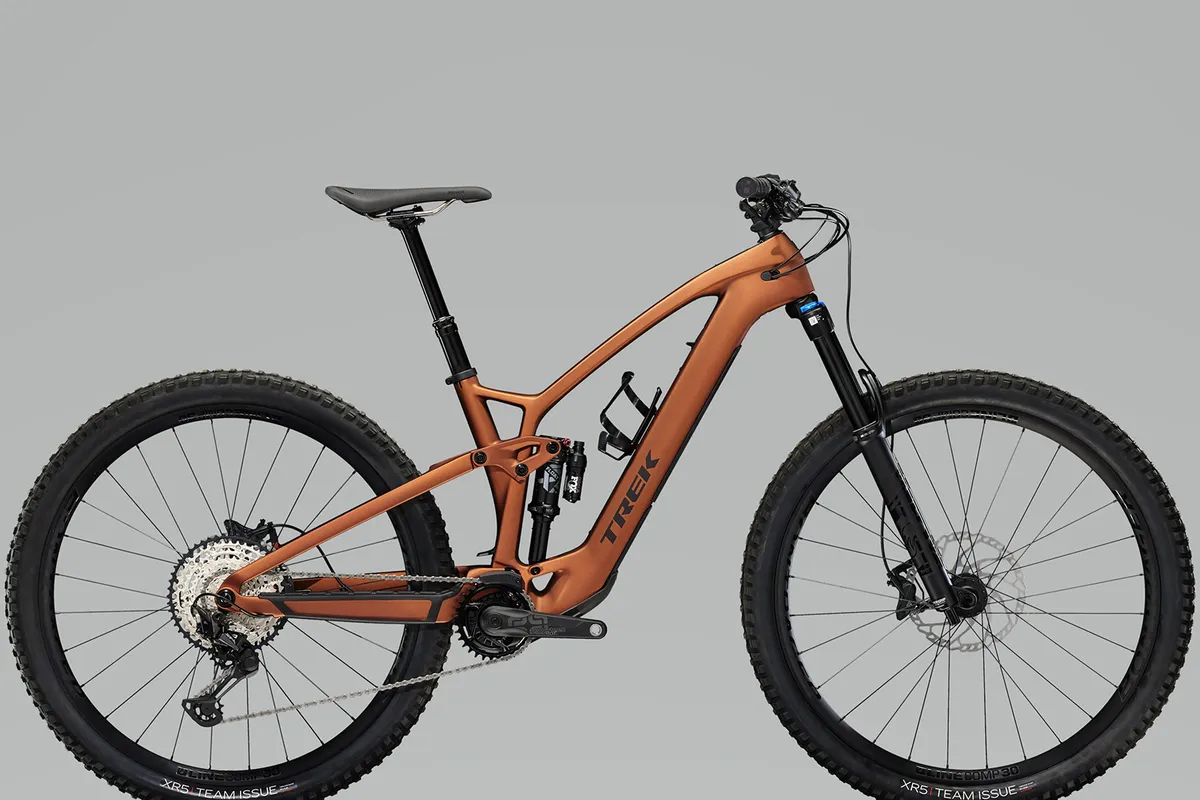
- Price: £7,100/$7,599.99
- Fork: Fox 36 Rhythm, 150mm travel
- Shock: Fox Performance Float X
- Tyres: Bontrager XR5 29x2.5in
- Drivetrain: Shimano SLX/XT
- Brakes: Shimano M6120
- Extras: N/A
Trek Fuel EXe 9.8 XT
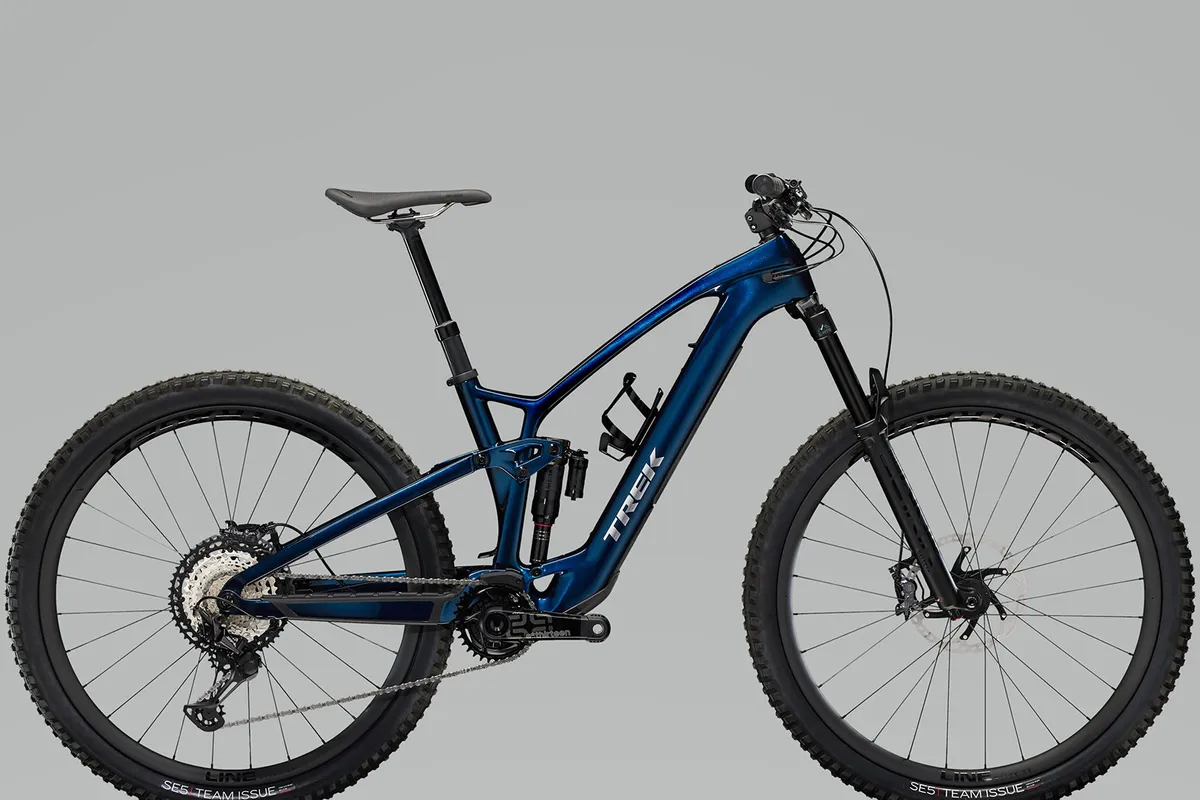
- Price: £8,500/$8,699.99
- Fork: RockShox Lyrik Select+, 150mm travel
- Shock: RockShox Super Deluxe Select+
- Tyres: Bontrager SE5 29x2.5in
- Drivetrain: Shimano XT
- Brakes: Shimano XT
- Extras: Bontrager Line Elite 30 carbon wheels and one-piece carbon bar and stem
Trek Fuel EXe 9.8 GX AXS

- Price: £9,750/$10,999.99
- Fork: RockShox Lyrik Select+, 150mm travel
- Shock: RockShox Super Deluxe Select+
- Tyres: Bontrager SE5 29x2.5in
- Drivetrain: SRAM GX AXS Eagle
- Brakes: SRAM Code R
- Extras: Bontrager Line Elite 30 carbon wheels and one-piece carbon bar and stem
Trek Fuel EXe 9.9 XTR
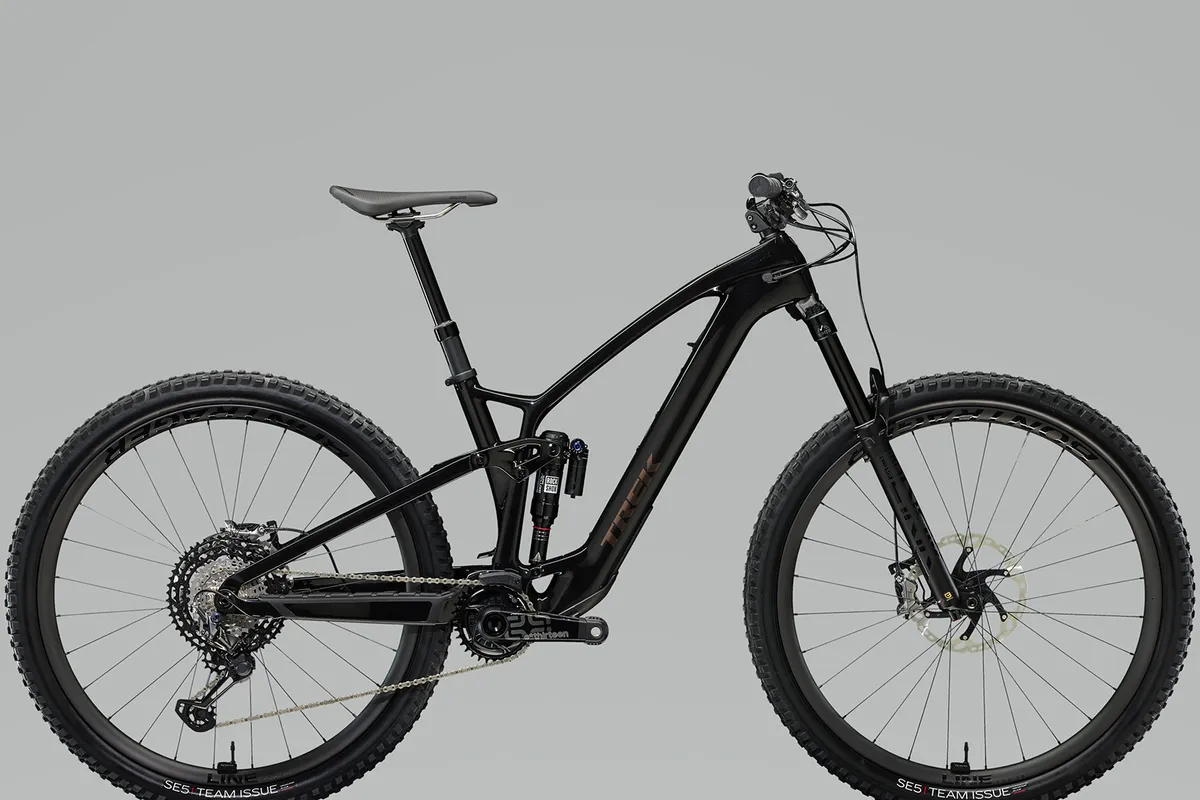
- Price: £11,500/$12,999.99
- Fork: RockShox Lyrik Ultimate, 150mm travel
- Shock: RockShox Super Deluxe Ultimate
- Tyres: Bontrager SE5 29x2.5in
- Drivetrain: Shimano XTR
- Brakes: Shimano XTR
- Extras: Bontrager Line Pro 30 carbon wheels and one-piece carbon bar and stem
Trek Fuel EXe 9.9 XX1 AXS
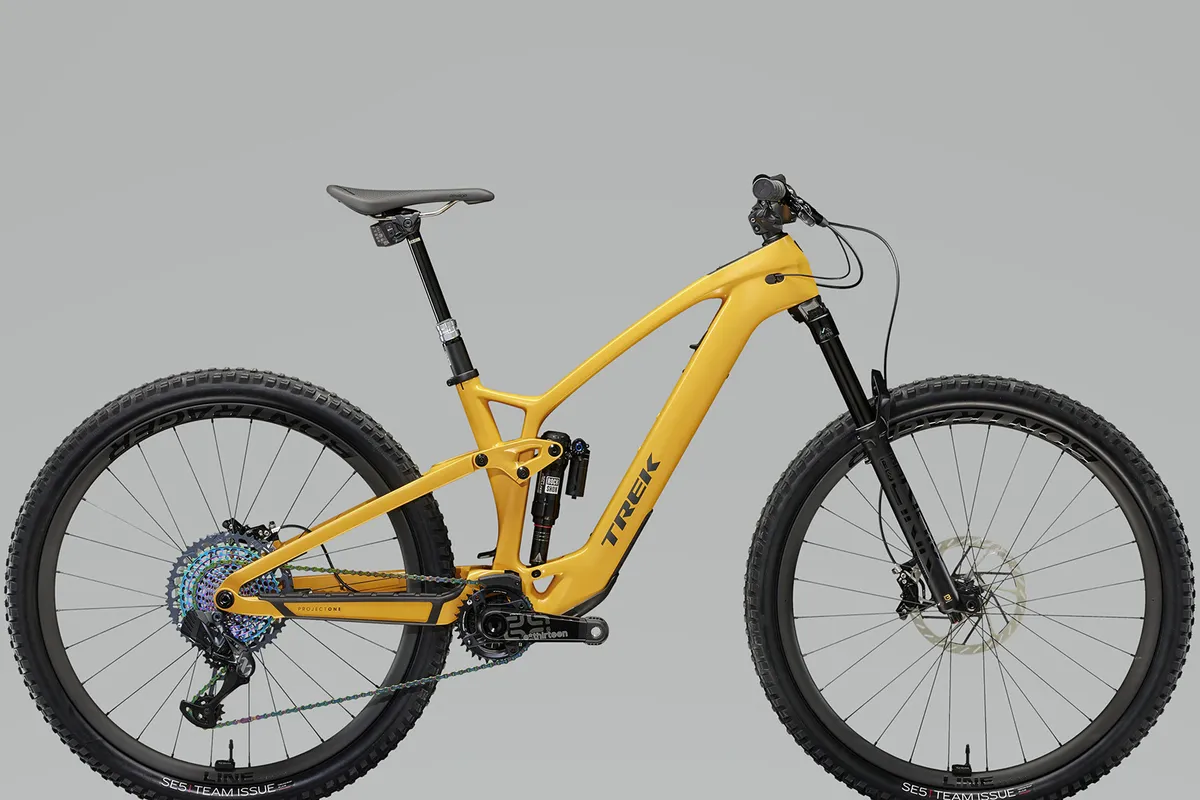
- Price: £13,250/$13,999.99
- Fork: RockShox Lyrik Ultimate, 150mm travel
- Shock: RockShox Super Deluxe Ultimate
- Tyres: Bontrager SE5 29x2.5in
- Drivetrain: SRAM XX1 AXS
- Brakes: SRAM Code RSC
- Extras: Bontrager Line Pro 30 carbon wheels, one-piece carbon bar and stem, RockShox Reverb AXS dropper and SRAM TyreWiz and AirWiz

